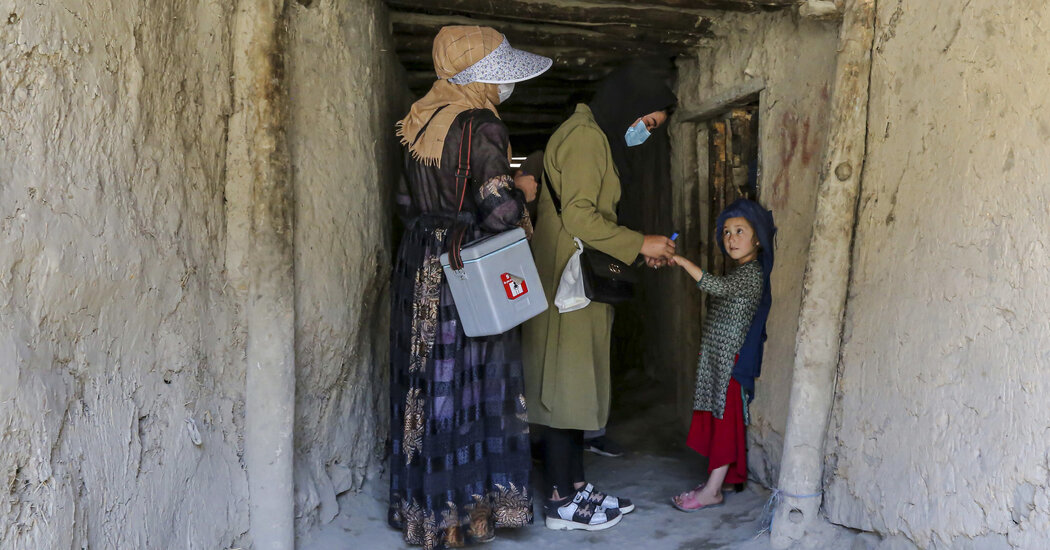
Why It Matters: Combining vaccines could offer longevity.
Oral polio vaccines, administered in droplet form, have driven down polio cases by more than 99 percent in recent decades. But because the drops contain live viruses — detectable in the excrement of children who get the vaccine — the virus can spread and cause new infections in countries with poor sanitation. The new vaccine won’t have this problem.
“More children today, in 2023, are paralyzed from circulating vaccine-derived polio than wild polio,” said Dr. James Campbell, a pediatric infectious disease expert at the University of Maryland School of Medicine who studies vaccine development.
He called the Gavi approval an “important step” in quelling the virus globally because it will give children in low- and middle-income countries access to a product that pediatricians in the United States and Europe have long offered.
The shot is also expected to help prevent infections because of its logistical ease. Since the polio vaccine will be wrapped into a combination product that is already being distributed to children, scientists say countries who use it will be less likely to see a resurgence of polio once the oral vaccines are scaled back.
Background: Polio has remaining strongholds in Afghanistan and Pakistan.
Polio, officially known as poliomyelitis, is a highly infectious viral disease transmitted mainly through feces in places with poor sanitation. The virus multiplies in the intestine and invades the nervous system, causing paralysis. Even a single existing case is problematic, experts say, because it could lead to a global resurgence.
The United States has long used an inactivated polio vaccine, or IPV, instead of the oral drops, and Gavi has been helping lower income countries buy it for the past 10 years. But the new six-in-one vaccine, called a hexavalent, will also protect children against hepatitis B, Haemophilus influenzae, tetanus, diphtheria and pertussis.
Adding polio protection to the existing five-component vaccine will raise its cost, but public health officials say the move is still economically advantageous. Fewer vaccine doses overall will help to decrease small expenses that add up, including syringes, serum refrigerators and appointments with health workers.
What’s Next: A global rollout is on the horizon.
Countries that Gavi serves will now be able to apply for funding for the vaccine, which could become available as soon as 2024. It is administered in three doses within the first months of life — plus a subsequent booster shot before age 2 — and UNICEF has estimated that the global market for the new vaccine could reach 100 million annual doses by 2030.